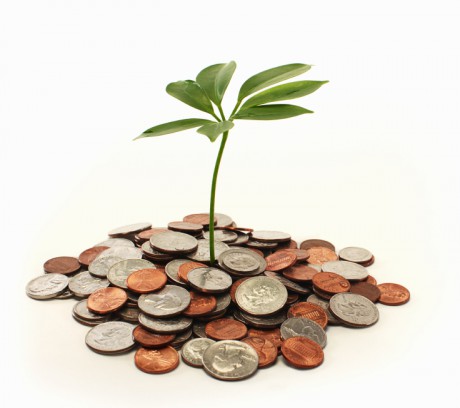Often many scientists, inventors and innovators with their ideas and requests for financial support contact us. These initiatives, we love and appreciate them. But to avoid lengthy negotiations on the conditions under which we as investors in start-up projects usually enter, respectively of input we are considering, we wrote the following statement describing reality. The rapid enrichment or saving the world is not that simple.
We would like to clarify what is, in our opinion, in fact, share of an idea or a patent on the overall success of the companies implementing the idea.
Although the idea is important, it is only a very small part of the success. Therefore, there are circulating CDs with many hundreds of interesting patents that were not implemented. Certainly there are thousands of failed start-ups. The problem is usually in the person of the inventor himself. He has no managerial training or experience, but he wants to talk into everything. He has his strategy of saving the world (sometimes not even that), is paranoid, neighbourhood doesn’t trust the idea or underestimates the importance if his idea. That’s why the inventor is trying his best to prove that they were wrong by patenting his idea. It is common that he owes money in his neighbourhood - we have such experience. Friends and helpers can make moral claims to a share of saving the world. Lenders are again trying to get their money back after the application of the inventor's patent and thus their disputes arise. Pundit himself through friends gets to an influential, powerful and wealthy people. Sometimes they manage to get the money, but as described below, the money is simply not enough.
Purely scientific or technological start-up is doomed. It is necessary to turn to a specialized team of professionals with experience in starting off businesses. It is necessary to ensure experienced people for all the roles that need to be hold in the company. It must create adequate organizational structure. In addition to all the development and proper application should have the original bearer of know-how only give advice. Delegate, accept better experts at specialized details - metallurgists, material engineers, chemists - who have experience with similar solutions to specific elements.
Now the share of the invention itself on a working enterprise.
The idea is as important as the assembly of a functional prototype and getting the first references (that‘s 50:50). We need to confirm that the prototype is functional and cost effective, and the calculation of the final production will only be as expensive to be worth next to existing technologies. We must remember that the existing technology is still outstanding and new benefits must be greater than solely to repay itself. New technology often must pay back the rest of the outstanding previous technology. "Repayment" and then the effort shareholders of 'extraction' older technology is essentially a brake on progress. It is also important to take into account this parameter in the business plan. (An example is the refund of electric car by the company Tesla Motors to market).
Then you need to make a business model. It is even more important than the completely original idea. Wrong plan can bring the company into bankruptcy, having already invested money and idea. There are hundreds of examples. Business model is thus know-how worth at least a 50:50 to a functional prototype – it has the same potential. For the record, it is now worth 25% of the patent.
Business model have to be implemented. It needs a complete manufacturing infrastructure. Machines, people in production and technical director, then we have the back office (accountants, lawyers, tax specialists). This is another set of know-how. We are paying off loans, pay interest on loans, taxes, depreciation, energy, salaries and bonuses.
At this moment, we produce and we have once again consumed a multiple of the current value. Another know-how, additional funding. Patent already has a share of about 12.5%. Of course it is important to realize that the production infrastructure the size of a garage has a different value, however, also a different potential – it can counterproductively thwart and reduce total potential. Conversely, too large or expensive infrastructure (unconsidered cost business model) can consume other values. In both cases, the value of the business model patent decreases, and therefore the value of the business model is so high. In the right case the share of a patent for a whole decreases, but its total market value increases.
At this stage, the dilemma of whether to grow organically and rapidly is being solved. Whether to build a factory on a greenfield site or the production of all or a outsource large part. Deciding is certainly supported by the number of orders and the enthusiasm of buyers. In the case of car Tesla it was the hundreds of pre-paid cars.
For further implementation of the business model and the established plan there must be marketing. From the perspective of marketing, this includes not only the "promotion" but also traders, vendors, dealers, sales offices in regions across the country (world). The business model may exclude dealers or, conversely, to create a multi-level. Marketing is carried out according to the business plan, but of course it is the most important stage of the process. It requires the same professionalism. Similarly, the desired goals have different ways of interpretation and implementation in practice. Marketing is no longer contributing to further increase of the value percentage, but asks what the cost is. Then they calculate for how much the product on the market / individual markets (different prices in the US and Europe) can be sold. The price calculate market research – interest, legislation, existing processes, relationships, moods and models. Marketers determine how many units of the product and at what price can be put on the market (including competitive products that exist or will appear). They estimate the number of units sold and sets the price. Here the brand value begins to build. Its value can be "attributed" to the price.
Followed by „slicing the bear“ – the marketing fond is determined, which can be orders of magnitude higher than existing investments. Business networking (offices - a lot of people around the world seeking trade opportunities) without retail typically consumes 30% of the product price. If it is a retail product and must be added a further 15 to 100% of added value, that is usually 7-50% margin according to the product type. Marketing costs in terms of propagation are then from 10% above. Marketing strategy is another unique know-how that should occur. Even a mere marketing plan will reduce the value of a patent by a third. Now subtract marketing including trade (infrastructure and investment) and we value the patent under 5%, in a perfectly operating company where no one has been "robbed" of their know-how. Deliberately we use the term "patent value" and not price, because the price of a patent is increasing with growth potential, especially with the growth of the overall price of created values. Management books used expression: 1 + 1 = 3
And there was no mention of money. Loans thus risky businesses usually provide specialized "Business Angels" who require a large income that will cover other failed investments, which always occur in such a risky sector. We are not talking about percentages, but about multiples of the amount deposited as a successful start-up has to pay 4 failed.
Investor perceives the risk of further competition. Although the inventor wholeheartedly believes that his patent is "hard", its publication will stimulate competition to find another solution that would lead to the same or often better result. Therefore, for us, has the patent generally negative value. We know that a person wants to be socially accepted and logically can submit patent. The value and price of patented subject by this, from a strategic point of view, however, is reduced. Patents "does not apply" in the majority of the world's population – have a look at Peru, Malaysia, India and China which are well known. Won court means only the costs. We cannot assume that the Chinese entity after several years of the courts still exists and there is anything to take from it. So you can judge only with your friend and / or creditor in one person who helped you get started and know enough to get himself patented invention constructed. Everyone else patent uses as an indication of path to a solution. Pat has more or less marketing value.
If this inventor does not realize all of this he has a super patent in a drawer. The inventor is indeed unique, but not the only one. Patent offices enrol almost "anything ". If no one withdraws, there is no problem with that. There is even written the perpetual motion. The patent can also be attacked and leave protection aside.
The greatest naiveté is not to patent the essence key of the invention in a domain that this patent to copy protection know-how. But it leaves the scope for patenting the real essence of someone else. Such a patent can only then dazzle your surroundings and the investor is worthless.
It is clear that you cannot go to the market just with bare patent. It is also clear that with gradual convention of start- up the share of inventor on the company decreases while greatly increasing the share price. It is estimated that as a result, the share will be about 1%, but this 1% will have a multimillion-dollar value / price. Nothing can be rushed: 9 women won’t give birth to a baby in a month. And it works also the other way: if there is no conception, no woman can make it in 9 months.
Our opinion: It is better to have a monthly salary and increasing the share price than the patent in a drawer and be recognized inventor on support. If you disagree with us, we are not suitable Business Angel for you.
And how it really goes with us? Moravia is cheaper, we have a lot of experience, and we are able to share resources, make use of part-time jobs, and use outsourcing. Overall, our know-how for starting start-ups is so large that it can be cheaper and thus increase the ratio of the share of the inventor. Of course the investor's share even without the start-up know-how must always be major. Otherwise, the money is not given. Fear of theft of invention in the minority share is rife. It is necessary to look at it from the side of the investor. If start-up fails, an investor looks at it as one of the four unsuccessful investments, which in total account for one successful. Losses are written off and he will let them pay with another project. Definitely will not attempt unsuccessful start-up start again with no scientist. It is not worth it. There are lots other projects with the same meaning for the world. Only the investor would lose a good reputation and he would lose his business in the future. Quality of the project reveals usually in the early stages, so the losses are not great.
And one more note: There are really many examples, to be found, which prove that if there is something better, it does not mean that it will automatically succeed in the market. Previously the quality, added value for the user and references were selling. Today, i tis the advertising.
Recommended literature for inventors who are trying to enter the business:
Quote from the book of the place where Professor Feynman gets a call from recruiter who wants to get him for managing a research team aircraft with rocket-propelled:
